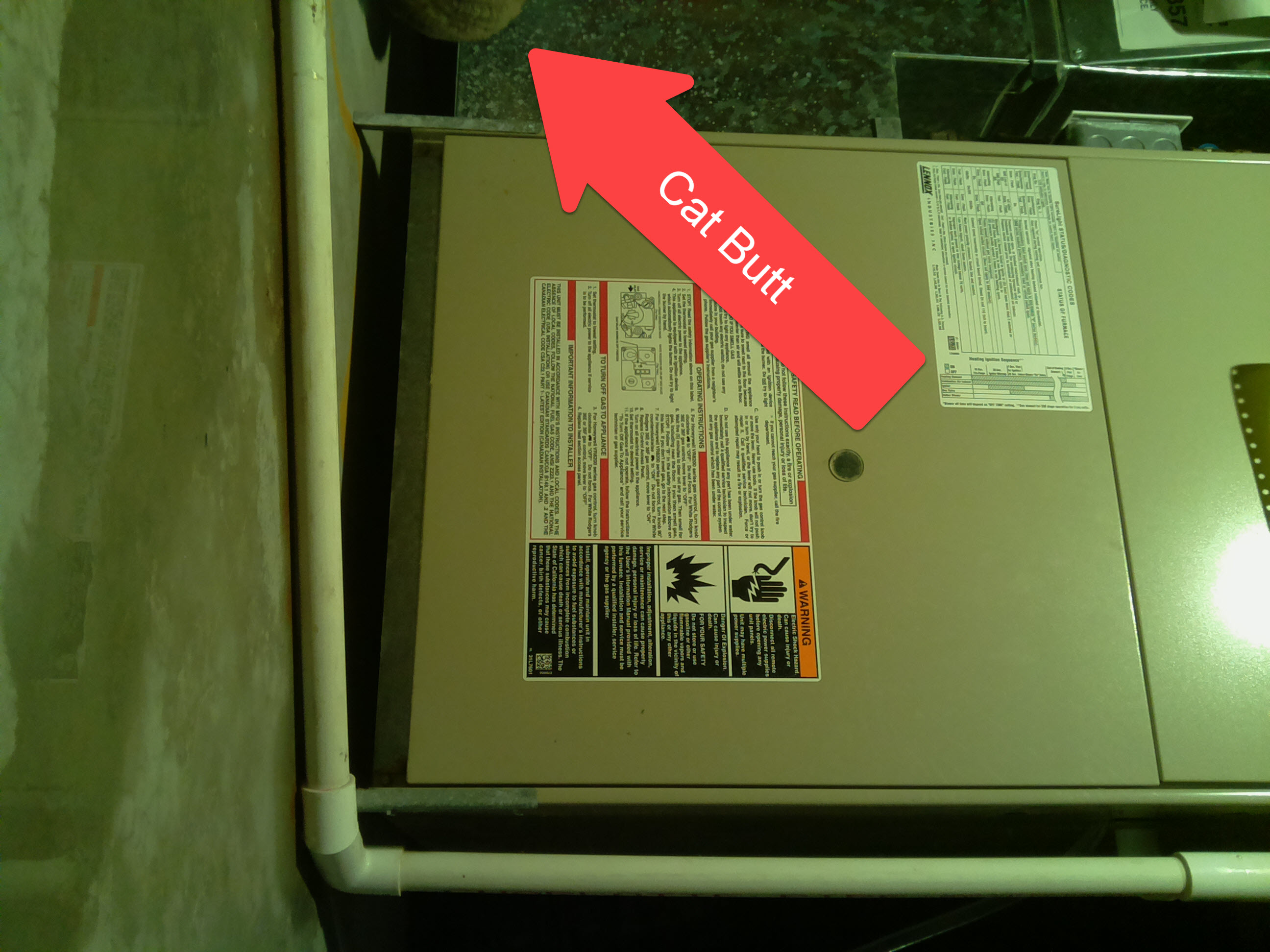Last fall I started to notice water in my machine room. The water would make the floor wet and pool up a little in places and seemed to be coming from the wall/floor. I’ve been freakig out a little because in the worst of cases scenario the fix would require excavation of the side of my house, new drain tile installed, and everything put back in place (~$10,000+). Or maybe jackhammering the basement floor and installing a sump on the other side of the house.
Before talking with contractors about my options, I needed to see the mechanics of the how moisture was entering my basement.
Test 1: A bunch of crap sitting around my basement
I found an USB webcam in a box of old parts and my trusty Raspberry Pi 3 to put together the POC. Here’s a picture of the setup.

Following this instrucable I was able to get the first run working, but the results were blurry. Unfortunately, you can only see the floor drying out. That is because the webcam moved on its own right before the leak occurred.
Test 2: Same set up, better shizz
After refreshing my memory with the Cron daemon, I decided to take another crack at this problem using the Rasberry Pi camera and a better camera mounting.
The camera cost $9.99 and I found a Raspberry Pi case with camera mount for ~$12.

My running theory was that this is rainwater leaking in or welling up about a day or two after it rains outside. I wanted to get this equipment mounted and tested before the next storm. I mounted the computer to the top of a rafter and used a velcrostrap to secure it in place. I detached the camera plate and mounted that to the unterside of the rafter using a couple spring clips.
After a few hiccups and reformatting the SUPERMAN memory stick, everything was working at 11 PM so I went to bed. When I woke up, it hadn’t rained but I wanted to see the results of my test. I FTP’d (thanks Mike!) the *.jpgs from the drive and here’s what I saw …
The water is coming from the furnace.
Ok, initially I thought the water was coming from the overflow hose so I put it in a bucket. To my suprise, the next day there was water on the floor but none in the bucket! Back to the drawing board.
Sick of all the FTP
Since this project wasn’t over I decided to come up with a better way to aim the camera. I found a good instrucable for setting up a streaming video web server. Now I can re-aim the camera by logging into a web page AND take a look from any web enabled device anywhere in the house.

Moving on
Next, I suspected that the leak may be coming from the elbow in the drain pipe so I hooked the camera up to watch it explicity and changed the picture frequency to snap every 5 minutes.
Unfortunately, it is obvious that the water comes from the other side or underneath the furnace. For your reference, this video is made up of 150 images over 12.5 hours.
The Evidence is in
This is probably the best capture of the issue. I get the elbow and you can see two distinct surges of water. This vieo was taken over 13 hrs 45 minutes at 5 minute intervals.
Upon inspection, it seems the leak happens at photo 1:55 AM. Conpicuously however, at 2:25 AM and then again from 2:40 AM – 2:45 AM we can see the cats hindquarters in the frame. Understanding the the criminal always returns to the scene of the crime, I think we’ve found the culprit. It’s time to get a dog.
OTHER FUN NOTES:
- This is the first time I’ve used SSH to log into a raspberry pi remotely and I loved it. I think I’m going to get a couple Pi Zeros now.
- I inadvertantly played around with the Motion program for taking pictures when something moves. That could be pretty fun too




